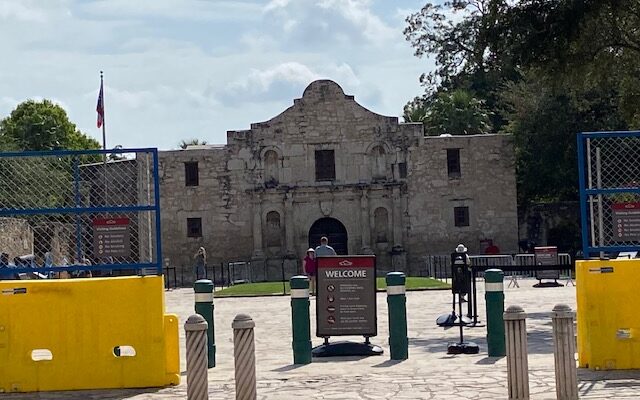Bexar County Judge Nelson Wolff, two others blast Alamo Plaza redesign plan

SAN ANTONIO (KTSA News) – Bexar County Judge Nelson Wolff and two other local leaders have fired off a letter to Mayor Ron Nirenberg criticizing the redesign plan for Alamo Plaza.
The letter, signed by Wolff, former Mayor Phil Hardberger and former Alamo Citizens Advisory Committee member Phil Bakke blasts city council for going along with the state plan which would fence off Alamo Plaza.
“We feel the state plan has gone astray from its beginning by not recognizing the history of Alamo Plaza as our most important public space in our city,” the letter states.
The signers note that the plaza has been the site of protests, vigils, presidential visits and parades.
“You may recall on July 21, 2018 that you, along with Bexar County Judge Nelson Wolff and Councilman Roberto Treviño authored an editorial advocating that Alamo Plaza should remain an open space,” the letter says.
It further states that Wolff, Treviño and Nirenberg opposed any barrier to limit access to the plaza at any time, other than for special events.
“Unfortunately, the City Council went along with the state and allowed it to be fenced off and Alamo street permanently closed. The demarcation of the fenced off space is at best, problematic as to the original battleground,” the trio states in the letter. “The battle of the Alamo can be commemorated without fencing us out.”
In response to the letter, Nirenberg said the plaza will remain open 24 hours a day.
“While the last iteration of the lease agreement ensured public access and the continued recognition of Alamo Plaza as the center of civic life in San Antonio, as we move forward, that must be one of the central tenets” Nirenberg said. “Alamo Street should not be closed unless there is a viable and funded plan for the museum that meets the vision for the project.”
They also are upset that no action has been taken “to protect the Woolworth building where a scene of historic civil rights struggle took place. Our city was one of the first lunch counters to integrate.”
Nirenberg says he has always supported the preservation of the Woolworth and Crockett buildings.
“And now that there is a study that shows it is possible, I hope that will be taken into account by the GLO as we move forward,” the mayor said.
Wolff, Hardberger and Bakke are calling on the San Antonio City Council to carefully review the plan and take these concerns into consideration.
City Council last week was briefed on the status of the Alamo Master Plan after the Texas Historical Commission voted against moving the Cenotaph, which was a key in the redesign plan for Alamo Plaza.
You can read the entire letter below:
Dear Mayor Nirenberg,
We are pleased that the City Council has agreed to review the Alamo Plan. We feel the state plan has gone astray from its beginning by not recognizing the history of Alamo Plaza as our most important public space in our city. The plaza has held protests, vigils, presidential visits, and parades.
You may recall on July 21, 2018 that you, along with Bexar County Judge Nelson Wolff and Councilman Roberto Trevino authored an editorial advocating that Alamo Plaza should remain an open space. It was specifically stated that all three of you opposed any barrier to limit access to the plaza at any time, other than for special events.
Unfortunately, the City Council went along with the state and allowed it to be fenced off and Alamo street permanently closed. The demarcation of the fenced off space is at best problematic as to the original battle ground.
The article also stated that attention should be paid to parades. Instead of permanently closing Alamo Street, bollards could be erected that could be lowered for parades like the Battle of Flowers. The bollards would also allow access for emergency vehicles.
To this date there has also not been any action taken to protect the Woolworth building where a scene of historic civil rights struggle took place. Our city was one of the first lunch counters to integrate.
History is not just represented by one historical event, but rather it is layered. Why would we erase the layered history of plaza by cutting off access and preventing a continuation of the plaza as a gathering space for our citizens and visitors to gather to enjoy the vibrancy of our city? The battle of the Alamo can be commemorated without fencing us out.
We hope that the City Council carefully review the plan and take into consideration our deep concerns.
You Might Also Like



